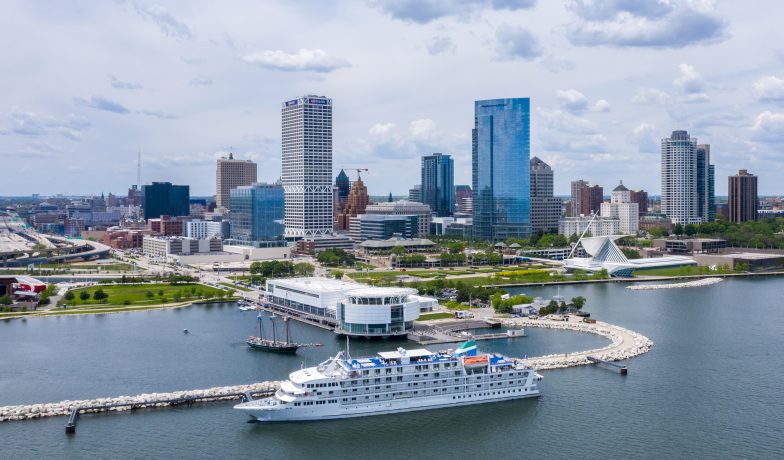Cruise Ships Return to the Great Lakes
Cruise ships may bring to mind the Caribbean, Mexico, or even the Mississippi, but thoughts don’t often turn to the Great Lakes. That was starting to change in the mid-2000s, when smaller lines began introducing stops along the coasts of some of the lakes, but when the pandemic arrived, that trend disappeared. Now, however, cruising on the Great Lakes is returning, with more ships and port calls than could previously have been imagined, and with the return is also a new consciousness of having this tourist mecca be done sustainably.
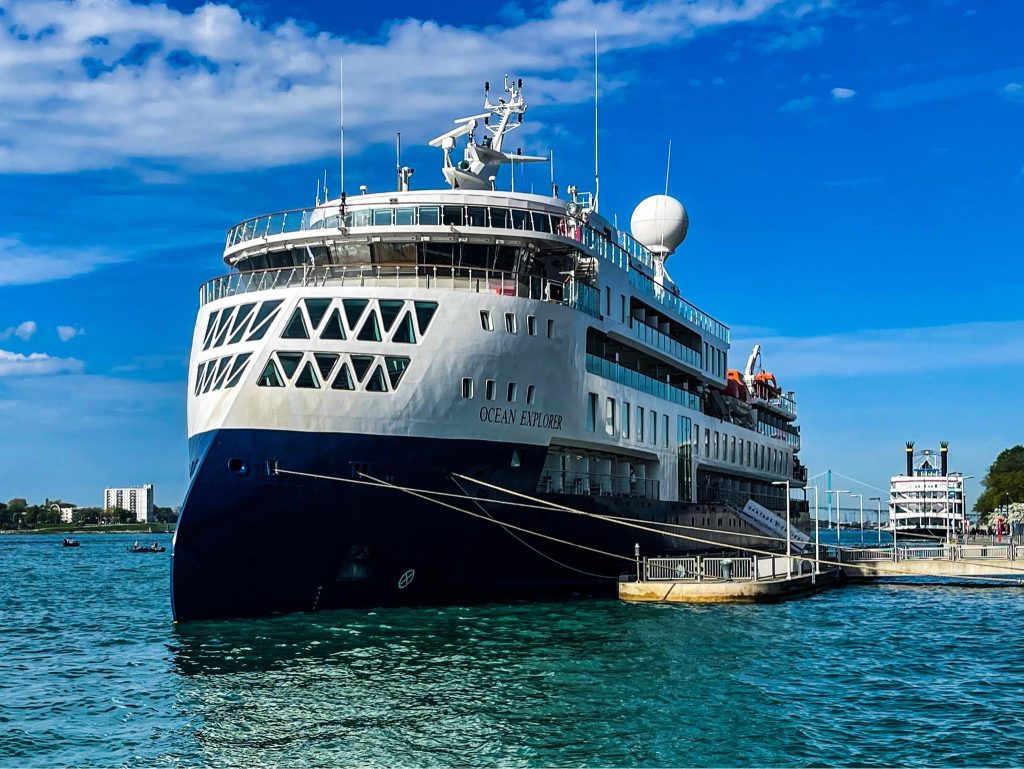
The Port of Milwaukee is just one stop along the way, but they are ready to host 33 port calls this season, bringing more than 10,000 passengers. This is a dramatic rise in cruising as 2019 saw just 10 port calls by four vessels, but cruise ships are responding to pent-up demand and what they lack in size compared to their ocean cruising counterparts, they can make up for in visits. Cruise lines that cover the Great Lakes carry just 200 to 400 passengers because the ships must be able to navigate through the locks of the St. Lawrence Seaway. The companies that sail the Great Lakes include American Queen Voyages, Pearl Seas Cruises, Viking Expeditions, Windstar Cruises, Ponant Explorers, Seabourn Cruises, Silversea Cruises, St. Lawrence Cruise Lines, and Hapag-Lloyd Cruises.
None of these ships are U.S. flagged which Jazmine Jurkiewicz, trade development representative for the Port of Milwaukee explained worked against them during the pandemic due to cabotage laws. Under cabotage rules, only U.S. flagged vessels are permitted to start and stop their journey in the U.S., so when Canada banned any visitors due to the pandemic, cruising the Great Lakes was essentially shut down.
The boats disappeared, but the focus on cruising did not. Without visiting ships, port operators put their focus on the logistics and internal management of the cruising industry to ensure when ships returned they would be ready to host assuring smooth, safe, and sustainable operations across every stop.
Port of Milwaukee
“Our success story on growth has been our ability to foster a supportive network of cultural amenities, restaurants, and local hospitality. We roll out the red carpet for cruise passengers.”
-Adam Tindall-Schlicht, director of the Port of Milwaukee
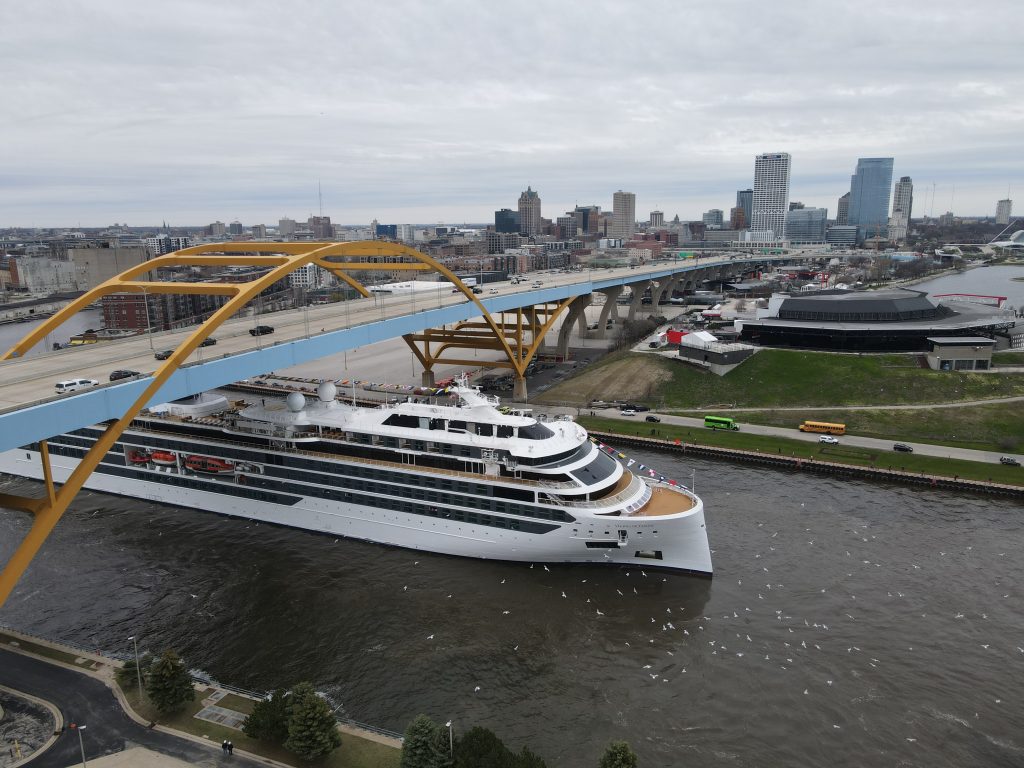
The port is a prime spot to cater to cruisers as a turnaround port for many of the ship itineraries. As such, ships use the Port of Milwaukee to offload passengers, turn the ship, load a new group of passengers, and set sail again. The city benefits from the extended time that passengers have to spend exploring the local area, staying in hotels, and dining in restaurants. The money spent by all these visitors is a tremendous boost to the local economy.
To further encourage cruising growth, the port is working on an ambitious infrastructure redevelopment that was enhanced through the recent $3.5M capital tourism grant that the port received. The money is being used to reinvest in both the South Shore cruise dock and Pier Wisconsin. The goal is to create docks that can accommodate the Seaway Max line which is home to the largest cruise ships that are still able to fit through the locks. “Having a dedicated dock for these ships ensures our long-term commitment and the longevity of cruise activity both here and for the entirety of the Great Lakes cruise market going forward,” Tindall-Schlicht said. The Port of Milwaukee will be the first major port to have a dedicated dock for cruise ships. Plans are for construction to begin at the end of 2022 or early in 2023.
Sustainability Pledge
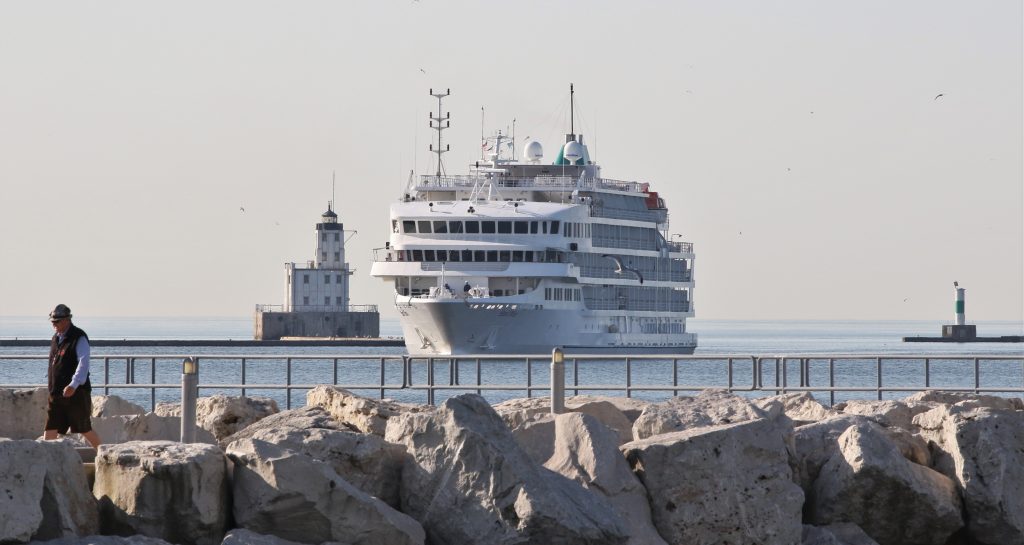
Pat A. Robinson Photo / Port Milwaukee©
Bringing larger vessels that carry many passengers is not without some risk to the fragile lake environment that is the exact attraction that many guests seek. The Great Lakes face challenges from pollution, climate change, and other frustrations that are no different from any waters in the U.S. and beyond. Knowing that the cruise industry is getting ready to rapidly grow, the ports, cities, and cruise lines that will benefit have agreed to do all they can to protect the waters.
The ports, along with cruise lines, and travel bureaus created the Cruise the Great Lakes coalition to better organize and safeguard the entry of cruisers to this region. “We wanted to bring in best practices across the Great Lakes that cruise ships and the ports would all operate in a safe, healthful, and sustainable way. The first effort was a safety pledge,” Tindall-Schlicht said. The group next announced a sustainability pledge that is designed to limit the impact of visitors, reduce air and carbon emissions, and ensure wastewaters are disposed of properly.
Specifically, the pledge covers four definitive areas. Under destination stewardship the ports agree to sustainably manage tourism flows, source food locally, and assure a light shoreside footprint. For air emissions and carbon footprint, the pledge is to use advanced materials, technologies, processes, and practices to try to meet the goal established by the Cruise Lines International Association of a 40% reduction in the rate of carbon emissions across the cruise industry’s global fleet by 2030. The wastewater section asks that only shore treatment facilities be used to treat wastewater, and that treatment meets with regulatory requirements set by the International Maritime Organization’s International Convention for the Prevention of Pollution from Ships (MARPOL). Finally, the pledge details that recycling of materials should be done for both repurpose and for use as an energy source.
The Port of Milwaukee took sustainability a step further by offering a 10% discount on dockage for vessels that can prove they’ve invested in green practices, such as a partnership with Green Marine or a similar sustainability-based organization. “We’re not just trying to shout that we’re green, we want to put the efforts of others into their pocketbooks,” Jurkiewicz said.
She added that the pledge also works as a marketing tool to reach potential passengers that want to embrace the Great Lakes but do so sustainably, understanding the value and importance of the Great Lakes as a freshwater resource.
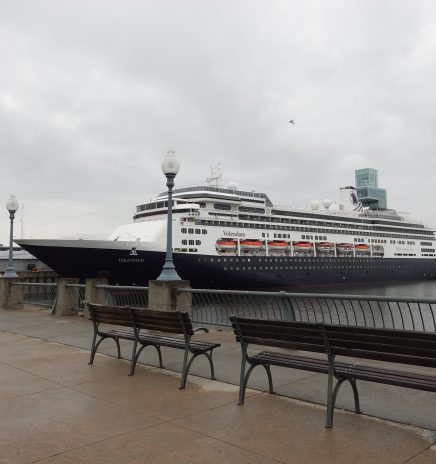
2024 Passenger Cruise Season Underway
The 2024 cruise season is officially underway on the Great Lakes and St. Lawrence Seaway System. The Port of Montreal celebrated the launch of the cruising season on May 4,... Read More
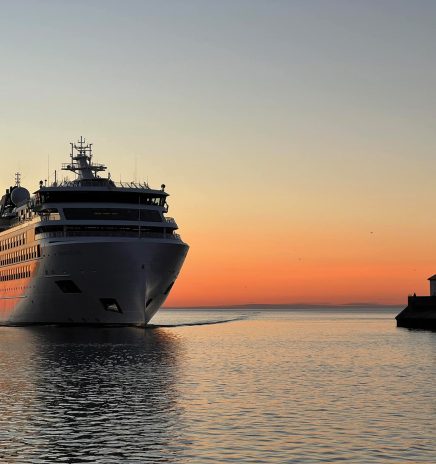
Great Lake Cruising Exceeds Expectations
Ports prepare for another busy season The ports and communities that support cruise ships in the Great Lakes just wrapped up their busiest season to date, but the focus is... Read More

